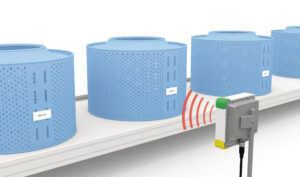There comes a time with many industrial projects where remote I/O can span vast distances or obstacles which sometimes makes running “pipe and wire” quite costly. This is when you’re faced as the project lead to make a decision on how to handle the situation: Maybe that portion of the system can run standalone with another PLC? Or, maybe we cut out something else from the budget to afford running the additional conduit and wiring for remote I/O? Or, maybe it’s such that running any new conduits are next to impossible due to the terrain or other logistics, or maybe the equipment is “mobile”? Every situation is different, so there is not a “one solution fits all” answer. However, using an industrial wireless solution might be your best bet, and the technology has evolved quite a bit in recent years making it more secure, reliable and robust.
There are many “flavors” of industrial wireless solutions on the market today. Some of these systems work on the same frequency as the WiFi embedded in your cell phone or laptop (usually 2.4GHz and 5GHz), while most others operate in the 400MHz-900MHz range. The latter frequencies will give you the greatest range (upwards to 15-30 miles line of sight) but much slower data rates, while the typical “WiFi” frequencies will give you the most bandwidth but limited distance (more useful for applications that also require streaming video). As far as I/O goes, high bandwidth is not really that important, so that’s why at PCA we’ll typically stay with the 900MHz option. Although LOS (line of sight) is measured upwards in miles at that frequency, one must take into consideration a typical industrial setting that is usually congested with tank farms and equipment, so the distance covered would be considerably less from the point of transmission to the receiving end. However, 900MHz signals really have no issues “bouncing” around obstacles, so typical industrial installations will not see a significant degradation of signal strength. Almost all industrial wireless radios sold today do not require licensing from the FCC if they remain under a certain transmission power, so that’s one less thing to worry about.
So we’ve covered the “when” for using industrial wireless along with some basic information, so what about “how” to implement? Prior to running out and ordering a whole bunch of radios for installation, we must first answer several questions: Will you require discrete I/O, analog I/O, or both? How much of each? What type of PLC or other controls device will be used to interface to this I/O? What product line is best for your application? In addition, a good starting point would be to conduct a site survey of where you plan to install and use the wireless I/O infrastructure. This is where PCA can be of assistance.
We would start off by setting up a meeting to discuss your particular application to see whether or not industrial wireless is a good fit. Once we have ascertained that wireless is the way to go, we would work with the customer to determine I/O requirements, as well as how this I/O will interface back to the main control system. Then, we would sift through the several industrial wireless manufacturers to determine the best fit. PCA would also conduct a site survey to ensure that there are no dead spots or other concerns with the installation prior implementation. We would also perform all configuration and programming as necessary and remain onsite until the implementation has been thoroughly and successfully tested.
In this article, we only scratched the surface on “When” and “How” to implement industrial wireless. For further information, please contact us and let’s sit down to discuss your application in greater detail and answer any questions that you may have.



